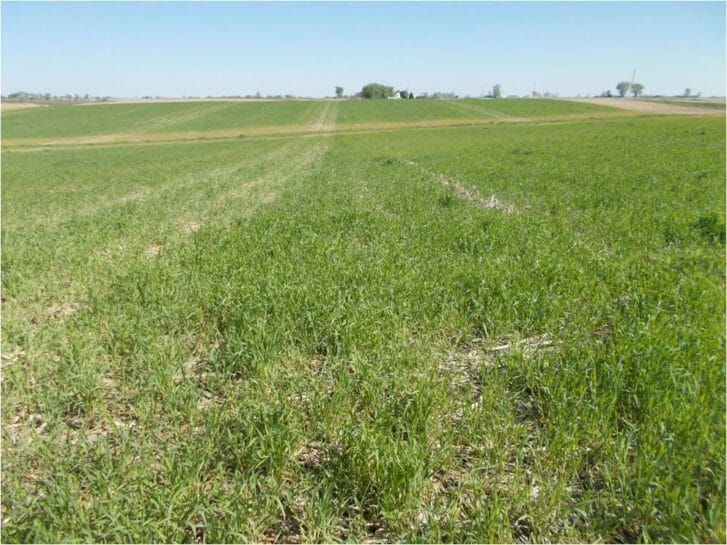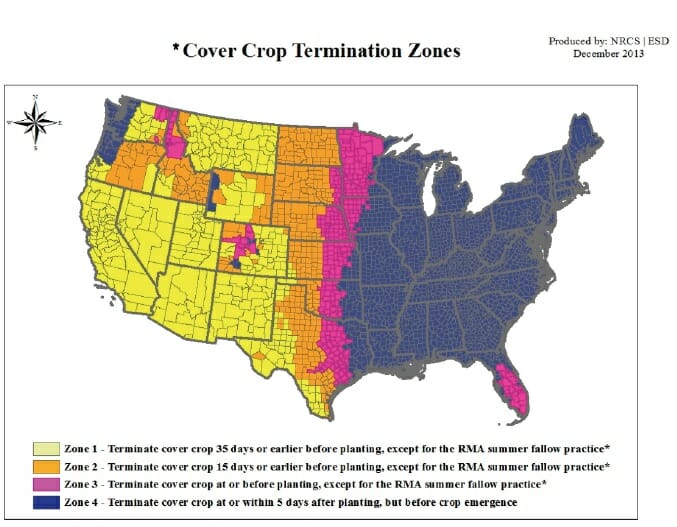3 Steps to Extend Crop Insurance Deadline for Cover Crop Termination
In Iowa and across the Cornbelt a late fall cover crop planting date and cold spring has left farmers with reservations about terminating cover crops now when it’s so small, especially if weed control is a primary goal. But, in order to comply with standard crop insurance rules, farmers would have to go ahead and terminate anyway.
Luckily, we’ve already done the research to show that in this case, farmers and insurance providers can have their cake and eat it too. PFI member and farmer Tim Sieren near Keota, IA evaluated soybean yields on his farm when rye was killed May 5, 2017, either 11 days after planting soybeans or 2 days before soybean planting in this trial. Soybeans yielded the same across all treatments at 66 and 67 bu/A, respectively.
If you want the option to leave your cover crops in the field longer this year, follow these three steps to secure your deviation today.
Step 1) Check your RMA termination deadline. 
Now that you know what the rule is for your area, does it fit with your management goals on the cover crop? If it doesn’t and you want to request an extension, continue on to step 2.
Step 2) Let your crop insurance agent know you’ll be requesting a deviation. Within the RMA guidelines it states:
Insurance shall attach to a crop following a cover crop when the cover crop meets the definition provided in the Basic Provisions, was planted within the last 12 months, and is managed and terminated according to NRCS guidelines. If growing conditions warrant a deviation from the guidelines, producers should contact either Extension or the local NRCS for management guidance. For information on cover crop management and termination guidelines, refer to the Cover Crop Termination Guidelines published at http://www.nrcs.usda.gov/wps/portal/nrcs/main/national/landuse/crops/.
Step 3) Request a termination deviation from your county NRCS office. They will work with the state office to provide a letter stating that cover crops can be terminated outside of the current guidelines but prior to reaching 24″ in height if followed by a soybean cash crop, allowing flexibility to use cover crops for weed control and providing continued soil health benefits. Pre-emerge herbicide effects and label compliance also needs to be considered when delaying termination.
For more information on how to agronomically manage cover crops to avoid a negative effect on corn or soybean yield contact me at Practical Farmers 515-232-5661.
